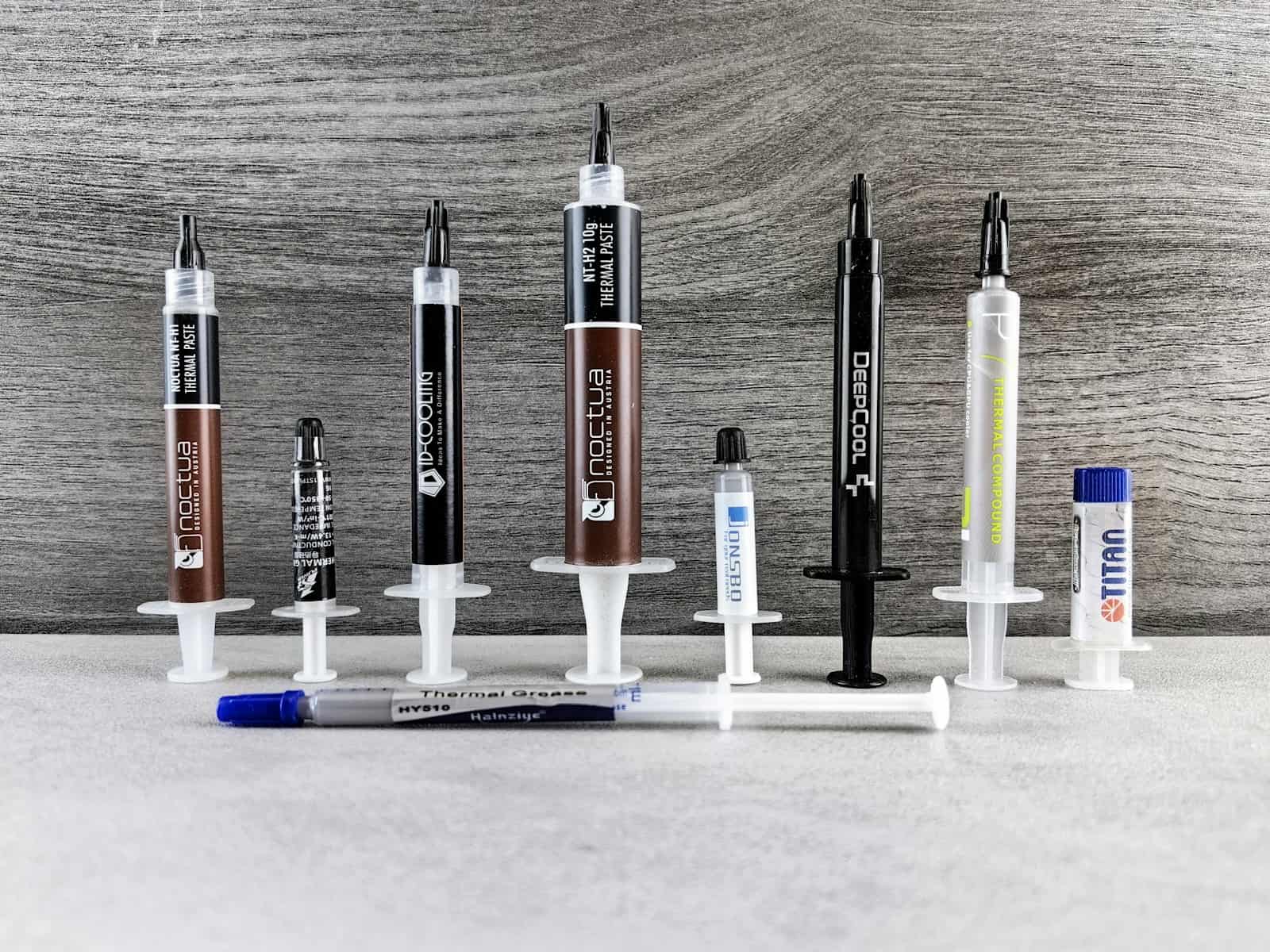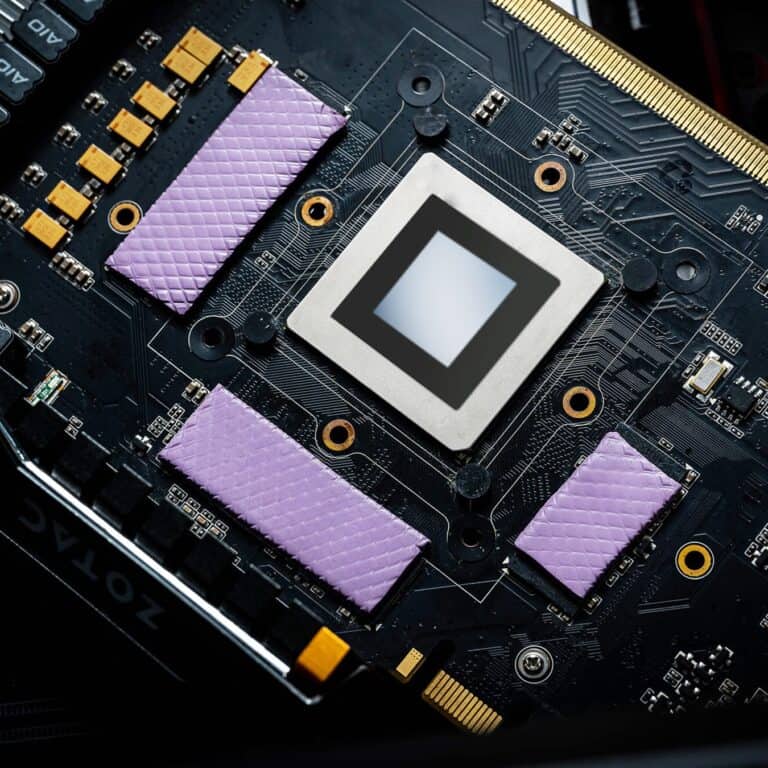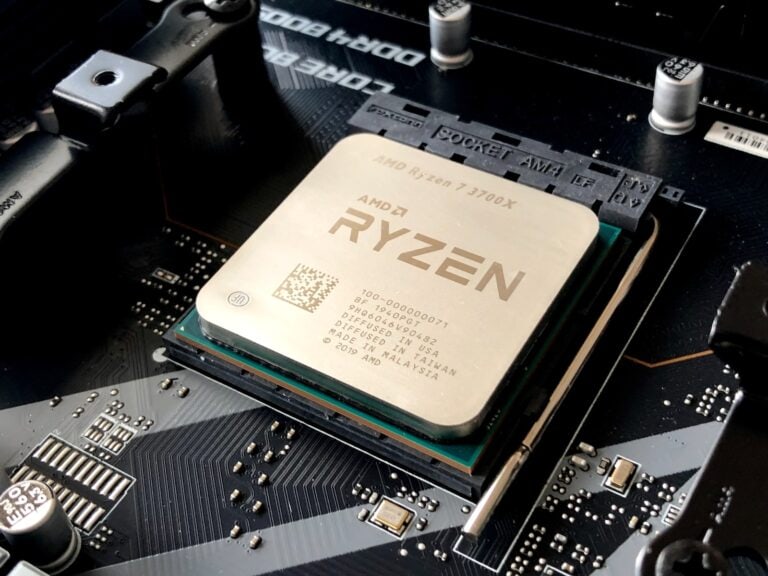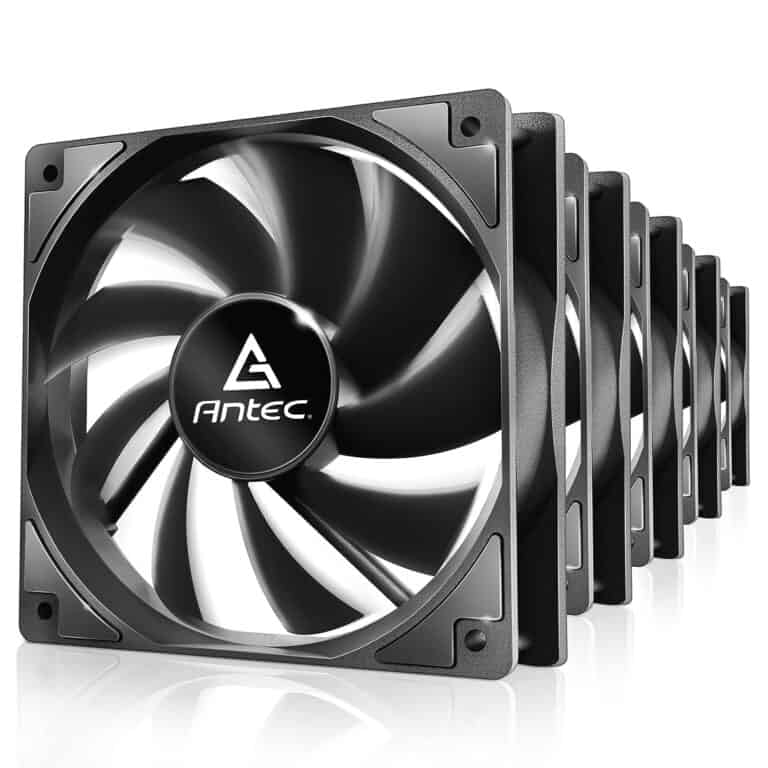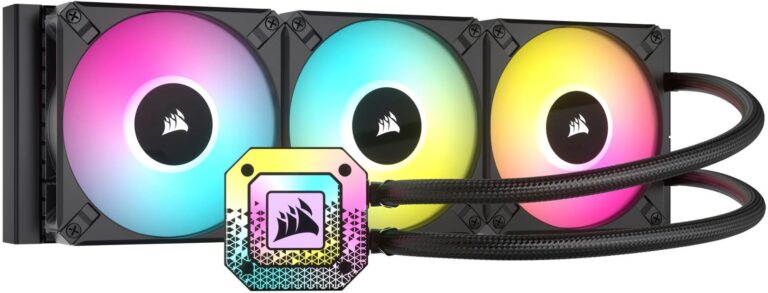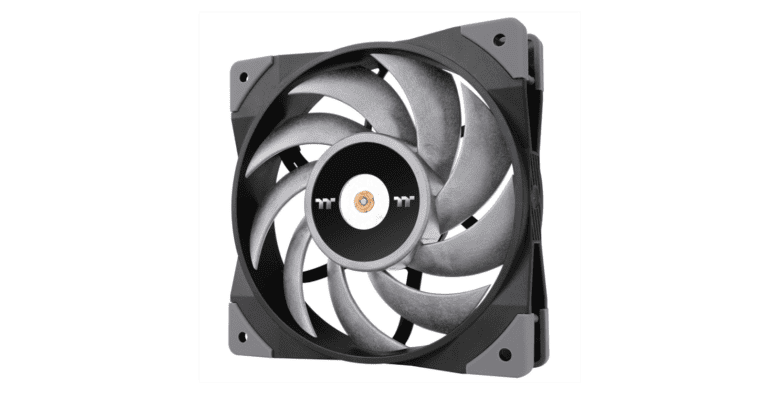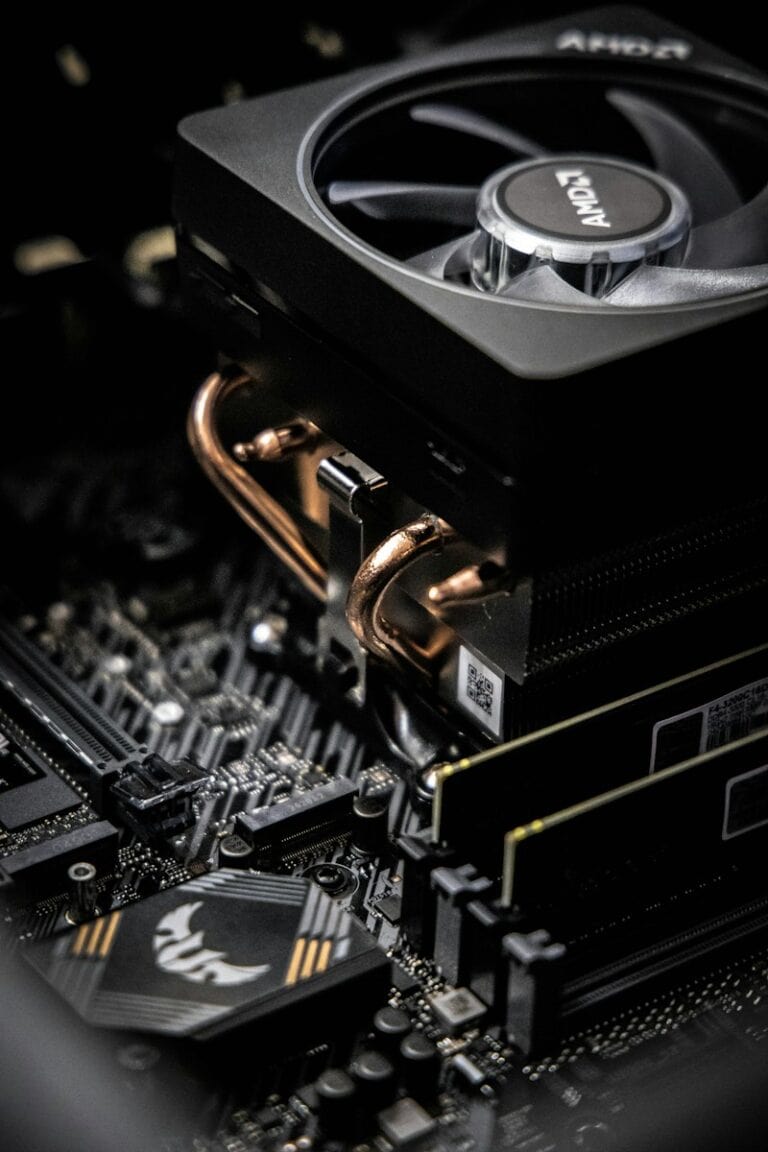Thermal paste (also known as thermal compound or thermal grease) is important for the health of your computer. It is a substance that helps with heat transfer from a computer’s central processing unit (CPU) or other integrated circuit (IC) to a heat sink. Known as thermal paste, grease, or gel, this interface material fills microscopic gaps and imperfections on the CPU and heatsink surfaces that would otherwise trap air, an insulator, and hinder heat transfer.
Proper application of thermal compound is crucial for cooling performance. Too much can be as problematic as too little. Hence, methods to apply thermal compound efficiently are discussed among tech enthusiasts. From a small pea-sized dot to thin lines or spreading evenly across the processor’s surface, these techniques ensure optimal performance without compromising the CPU, GPU, or other vital components exposed to thermal risks.
Definition of Thermal Paste
Thermal paste, also known as thermal compound or thermal grease, is a heat-conductive substance used to improve the transfer of heat between two surfaces. Its most common use is to connect a computer’s CPU or GPU to its heat sink.
The surfaces of a CPU and a heat sink, while appearing smooth to the naked eye, have microscopic imperfections. These imperfections can trap air, which is a poor thermal conductor, and hinder the heat transfer process. Thermal paste fills in these tiny gaps, creating a more efficient pathway for heat to move from the component to the heat sink for dissipation.
There are different types of thermal paste, including:
- Metal-based: These pastes contain metal particles like silver or aluminum. They offer excellent thermal conductivity but can be electrically conductive, so they require careful application to avoid short circuits.
- Ceramic-based: Containing ceramic powders like boron nitride, these are electrically insulating and safer to apply. They generally offer good, but not the highest, thermal performance.
- Carbon-based: These pastes use carbon microfibers or particles to transfer heat. They are electrically non-conductive and a popular choice for their balance of performance and safety.
Thermal paste is an essential component for keeping electronic devices from overheating and maintaining optimal performance. It’s recommended to reapply thermal paste every few years, or whenever you remove the heat sink, to ensure continued effectiveness.
Understanding Thermal Compound: Your Computer’s Cooling Secret
If you’ve ever built a computer or looked into optimizing your system’s performance, you might have come across the term “thermal compound.” This mysterious substance, also known as thermal paste or thermal grease, plays a key role in keeping your computer cool.
What Does Thermal Compound Do?
Think of thermal compound as a bridge between your CPU (the brain of your computer) and its cooler. Even seemingly smooth surfaces, like a processor and the cooler’s base, have tiny imperfections. Thermal compound fills in these gaps, making heat transfer more efficient.
Why Is It Important?
- Prevents overheating: CPUs generate a lot of heat. Without proper cooling, they could overheat and suffer damage or throttled performance.
- Ensures optimal performance: A cool CPU runs at its best, giving you the full potential of your hardware.
- Enhances system longevity: By preventing overheating, thermal compound helps extend the lifespan of your components.
Types of Thermal Compound
Thermal compounds come in different varieties. Here’s a quick comparison:
| Type | Pros | Cons |
|---|---|---|
| Metal-based | Excellent thermal conductivity | Can be electrically conductive (take care when applying) |
| Ceramic-based | Affordable, good performance | Less conductive than metal-based |
| Silicone-based | Easy to apply, non-conductive | Lower thermal conductivity |
How to Apply Thermal Compound
Applying thermal compound properly is crucial. Too much or too little can hurt performance. Check reliable guides or videos online from sources like Linus Tech Tips or Gamers Nexus for detailed instructions.
Let’s keep those CPUs cool!
Key Takeaways
- Thermal compound facilitates efficient heat transfer from CPUs and GPUs to heat sinks.
- The correct application is critical for maintaining optimal cooling efficiency.
- Techniques to apply thermal compound vary, but the goal remains consistent heat dissipation.
Composition and Types of Thermal Compounds
Thermal compounds play a crucial role in electronic device cooling by bridging the small gaps between heat sources and heat sinks. These materials enhance heat transfer efficiency to keep components within safe operating temperatures.
Metal-Based Compounds
Metal thermal compounds such as silver, aluminum, and liquid metal options like gallium are highly effective due to their high thermal conductivity. Silver-based grease is a popular choice, known for its ability to conduct heat quickly. Liquid metal compounds stand out with even higher conductivity but require careful handling as they can be electrically conductive.
Ceramic and Silicone Compounds
Ceramic and silicone compounds consist of non-metallic materials like zinc oxide or silicones. These are non-conductive, meaning they pose no risk of electrical shorts. Ceramic compounds often offer a balance of good thermal performance and ease of use, as they do not conduct electricity and are easier to handle compared to metal-based ones.
Carbon-Based Composites
Carbon compounds utilize graphite or diamond particles, including nano diamond, to achieve impressive thermal conductivity without electrical risks. These carbon-based solutions often come in various forms, such as thermal grease or thermal gel, and are valued for their performance and safety characteristics, particularly in sensitive electronic applications.
Application and Performance
When it comes to keeping electronics cool, applying thermal compound correctly is crucial. It ensures effective heat transfer from a CPU to its cooler.
Applying Thermal Compound
To apply thermal compound, first clean the CPU’s integrated heat-spreader (IHS) and the cooler’s base. Use a small amount of compound in the center of the IHS. Some compounds come with an applicator, others spread as pressure is applied when you attach the cooler. A thin, even layer is key. Too much paste can insulate the CPU, while too little won’t cover the entire surface.
Thermal Compound in System Cooling
Thermal compound, or thermal paste, improves the connection between the CPU and the heatsink. It fills tiny gaps that trap air, enhancing conductivity. A high thermal conductivity means heat moves away from the CPU more efficiently. This is critical for both air and liquid cooling systems where the goal is to move heat to the fans or radiator quickly.
Impact on Electronics and Overclocking
Quality thermal paste can prevent overheating and extend the longevity of electronic components. It reduces the chance of throttling, where performance drops to lower temperatures. For those who overclock their CPU or GPU, a better thermal interface can lead to higher stable speeds. Manufacturers often specify when you should reapply their product, but it’s generally a good idea to check and replace thermal paste annually for optimal cooling performance.
Frequently Asked Questions
Understanding thermal compounds is key to maintaining the health and efficiency of computer hardware. These subsections address common inquiries about thermal compounds and their function in computer systems.
What is the purpose of thermal compound in computer hardware?
Thermal compound, often thermal paste, fills the microscopic imperfections on the surfaces of the CPU and heat sink. This improves heat transfer from the CPU to the heat sink, which then dissipates the heat away from the processor.
What materials are typically used in the composition of thermal compound?
Manufacturers commonly use various materials like metal, carbon, or silicon to make thermal compounds. These materials help in conducting heat due to their high thermal conductivity.
How does thermal compound enhance the performance of a CPU?
By enhancing the thermal connection between the CPU and the heat sink, thermal compound allows for better heat dissipation. This helps keep the CPU cooler, resulting in more efficient and stable performance even under high workloads.
What are the primary differences between heat sink compound and thermal paste?
Heat sink compound and thermal paste serve similar roles in heat conduction, but they can differ in composition. Heat sink compound is a broader term that can refer to various substances, including thermal paste, which is specifically made to be applied between CPUs and heat sinks.
Can thermal compound pose a toxicity risk during use?
Some compounds contain substances that may be toxic if handled improperly. Users should follow safety guidelines, such as not ingesting the compound and washing hands after use.
What substitutes are available for thermal paste if needed?
In urgent cases, alternatives like toothpaste or peanut butter have been used temporarily, but they are not recommended for long-term use. It’s best to use a product designed specifically for CPUs to ensure proper heat dissipation and avoid damage.

